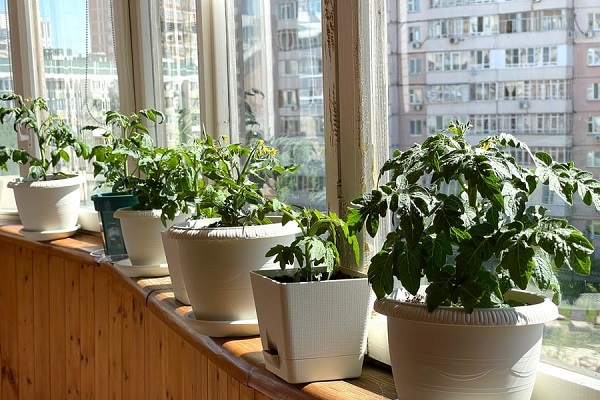
Welcome to the ultimate guide to creating an indoor apartment vegetable garden. If you’ve ever dreamed of plucking crisp, organic vegetables from your own home, this is the perfect resource for you. Imagine the convenience of stepping into your kitchen and harvesting fresh herbs, juicy tomatoes, and vibrant greens, all grown in the comfort of your apartment. With this guide, we’ll walk you through the step-by-step process of setting up and maintaining your indoor garden, regardless of the limited space you have.
Selecting the Right Location
Choosing the right location for your indoor vegetable garden is crucial for the success of your plants. Look for areas in your apartment that receive ample sunlight or consider using artificial lighting to supplement natural light. Ensure that the temperature and humidity levels are suitable for the vegetables you wish to grow.
Choosing Suitable Containers
When it comes to indoor gardening, selecting the right containers is essential. Opt for containers that have good drainage and are the appropriate size for your plants. Consider using self-watering containers or hanging baskets to maximize space.
Selecting the Right Vegetables
Not all vegetables thrive in an indoor environment, so it’s important to choose the right ones for your apartment garden. Herbs like basil, parsley, and mint are excellent choices for indoor gardening. Leafy greens such as spinach and lettuce, as well as compact varieties of tomatoes and peppers, also do well indoors.
Providing Proper Lighting
Since indoor environments may not offer sufficient natural light, providing adequate lighting is crucial for the growth of your vegetable plants. Consider using fluorescent or LED grow lights that emit the appropriate spectrum for photosynthesis. Position the lights at the correct distance from the plants to ensure optimal growth. Read this article to learn more about grow lights.
Proper Watering Techniques
Watering your indoor vegetable garden correctly is essential to prevent overwatering or underwatering. Check the moisture level of the soil regularly and water the plants when the top inch feels dry. Be careful not to let the plants sit in standing water, as this can lead to root rot.
Fertilizing Your Plants
Indoor plants may require additional nutrients to thrive, as the soil in containers can become depleted over time. Choose a balanced organic fertilizer and follow the instructions for application. Be cautious not to over fertilize, as this can harm your plants.
Controlling Pests and Diseases
Even indoor gardens are susceptible to pests and diseases. Keep a close eye on your plants and regularly inspect them for any signs of infestation or disease. Use organic pest control methods such as neem oil or insecticidal soap to combat common pests.
Harvesting and Enjoying Your Produce
One of the most rewarding aspects of indoor gardening is the ability to harvest and enjoy your own homegrown produce. Harvest your vegetables when they are ripe and enjoy the freshness and flavor that comes with growing your own food.
Troubleshooting Common Issues
Despite your best efforts, you may encounter some challenges along the way. Common issues in indoor gardening include yellowing leaves, fungal diseases, and inadequate pollination. Educate yourself about these problems and their solutions to ensure the success of your indoor vegetable garden.
FAQs about Indoor Apartment Vegetable Garden
Can I grow any vegetables indoors?
While not all vegetables thrive indoors, many varieties can be grown successfully. Opt for compact and dwarf varieties suited for indoor gardening.
How much light do indoor vegetable plants need?
Most vegetables require at least 6 to 8 hours of direct sunlight or the equivalent in artificial lighting for optimal growth.
Do indoor vegetable gardens require special soil?
Using a well-draining potting mix specifically formulated for container gardening is recommended for indoor vegetable gardens.
How often should I water my indoor vegetable plants?
Watering frequency depends on various factors such as plant type, container size, and environmental conditions. Check the soil moisture regularly and water when needed.
Can I reuse the soil for my indoor vegetable garden?
It’s best to refresh the soil in your indoor garden annually or whenever you notice a decline in plant health. Use a high-quality potting mix for the best results.
The Final Verdict
Creating an indoor apartment vegetable garden is an excellent way to bring nature into your living space and enjoy the satisfaction of growing your own food. By following the steps outlined in this guide, you can successfully cultivate a thriving indoor garden that provides you with a continuous supply of fresh, flavorful vegetables.
Keith Wilson is a passionate gardener. As a plant lover and expert, Keith helps urban dwellers bring gardening into their homes. Sure Gardening, a website he created, shares his insights and expertise on gardening related topics. Visit SureGardening to discover more about Keith’s work and to explore a world of gardening possibilities.
Related Articles & Free Email Newsletter Sign Up
How to Create a Balcony Garden in Limited Space
How To Create a City Garden on a Small Budget



Comment here